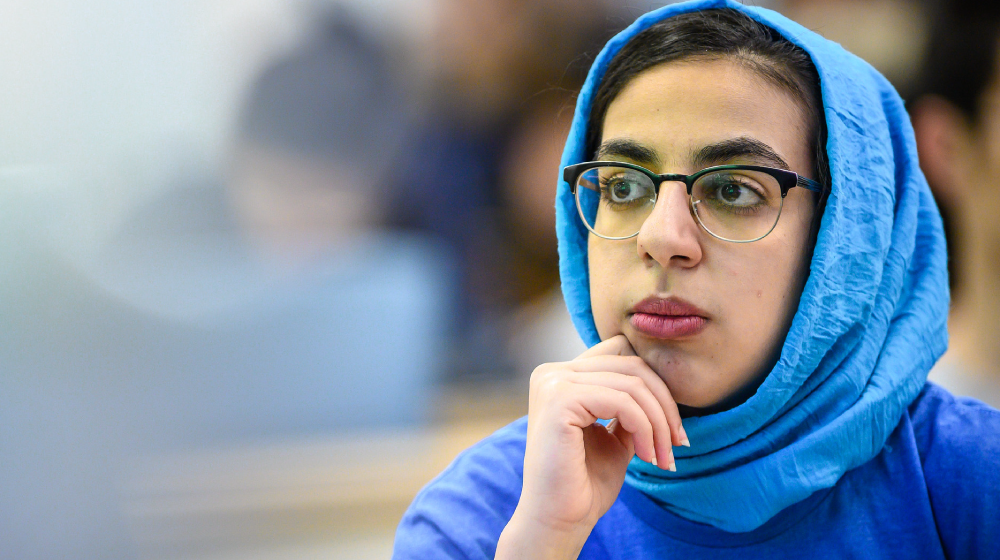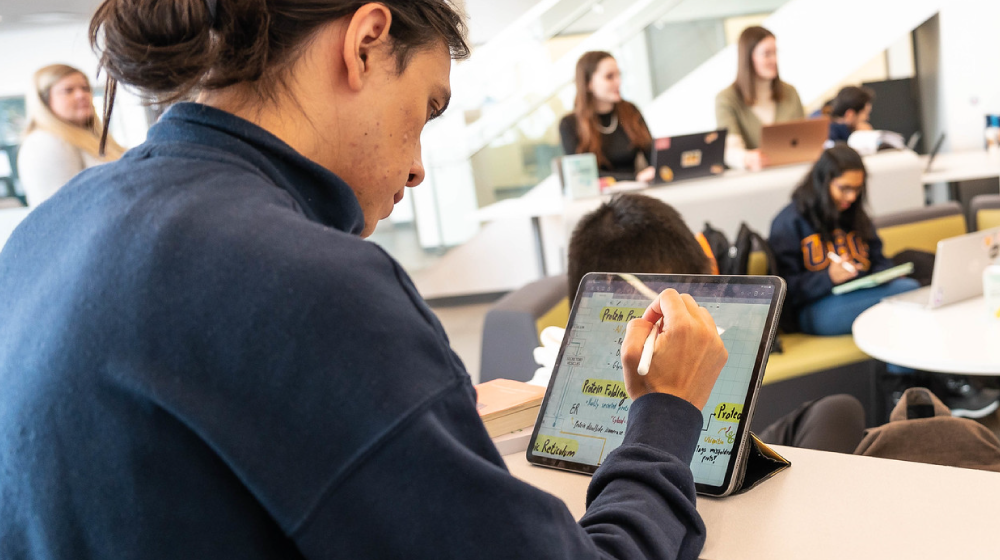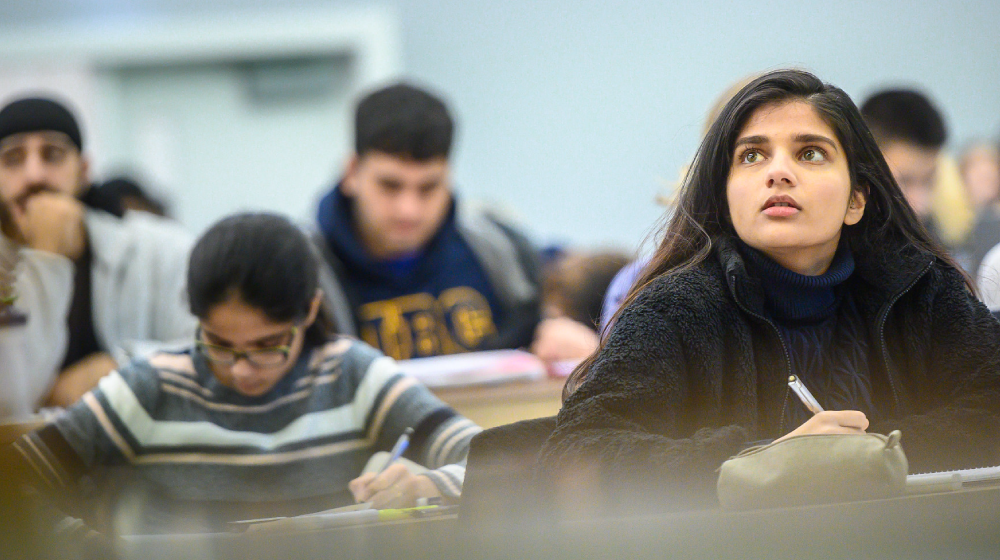Arabic is used by over 400 million people, making it one of the five most spoken languages in the world. However, the way it is used on a daily basis is different from most other ones. Arabic is a diglossic language, which means that two variations of the language constantly co-exist. Modern Standard Arabic is used primarily in writing, while a wide variety of spoken dialects are commonly used in everyday life.
Within this diglossic structure, Modern Standard Arabic is often considered superior, while spoken Arabic is overlooked or looked down on. To address this challenge, one UBC instructor decided to leverage technology in her course to celebrate spoken Arabic, help her native students reconnect to their mother tongue, and document immigrants’ stories in the process.
Balancing Modern Standard and spoken Arabic dialects
Giving more visibility to spoken Arabic does not mean that Modern Standard Arabic should not be studied, as it plays a central part in people’s lives. “Modern Standard Arabic is mostly used for official and written publications, such as contracts, newspapers, textbooks, and other specific contexts,” explains Dr. Nesrine Basheer, assistant professor of teaching in the Department of Asian Studies, who joined UBC in 2022 to create its first Modern Arabic Program. “A university lecturer may choose to use it during a course, but it is not the native language for any Arabic speaking person.”

However, solely focusing on the Modern Standard aspect of Arabic would not be telling the whole story, as Nesrine confirms. “On the other side of the spectrum is spoken Arabic, which has connected but unique dialects that vary from Oman, all the way to Morocco.” As a result, even native speakers coming from neighbour countries use Modern Standard Arabic while also speaking different dialects.
Natalie Jubeh, a fourth-year Palestinian undergraduate Film Production student, and Noor Husain Ramadan, a second-year Iraqi undergraduate Psychology student, who took the MES 450 course, can relate. “Each country or region has a different dialect,” Natalie explains. “Noor and I use two different ones, and it sometimes feels like a completely different language.”
Technology is an effective way for Natalie and Noor to access primary sources and bring them to British Columbia. “Arabic is not a popular language in Canada,” Noor explains. “Technology comes in handy to access videos, podcasts, and so many other resources in Arabic.”
Technology is also a tool Nesrine has been using to help her students assess their knowledge for a long time. Since she uses a flipped classroom approach, the time spent together is not dedicated to lectures, but to discussing thoughts and reflections around the assigned materials. In that sense, technology lets students learn in their own way, especially for time-consuming aspects of the learning experience. “Arabic is a very rich language, thanks in parts to its diglossic nature, which can make vocabulary retention challenging.” Nesrine describes.
Thanks to a flash card application, she designed vocabulary assignments and recorded pronunciation exercises so that her beginner Arabic students could learn on-the-go. “They can be on the bus while studying vocabulary and practice pronunciation.”
Combining both benefits of technology was the next logical step in Nesrine’s plan to shine a light on spoken dialects, connect her students with the local Arabic community, and make this experience part of the MES 450 curriculum.
Podcasting immigrant experiences in Canada
From the start, Nesrine wanted to create more than just another language course for native Arabic speakers. “I wanted to connect it to the local Arabic community and faculty,” she explains. “Why not add a community service component to the course and have students involved in the process?”

During the first week of class, she openly discussed the course’s direction and objectives with her students. “Because it was a new course, Nesrine wanted us to brainstorm the syllabus and discuss what we wanted to get out of the experience,” Natalie recalls. “One of the ideas was a podcast series that would record Arab immigrant and refugee stories in Canada, so they can be preserved forever.”
This student as partners approach to curriculum design was a way for Nesrine to step out of the traditional frame of teaching Arabic, while celebrating – and assessing – the use of spoken Arabic through technology. “My goal was to have students create something more meaningful than writing a research paper that I would read, grade, and move on from,” she explains. “I wanted them to use and celebrate their Arabic dialects as well, not just the Modern Standard version, to create something that lasts.”
This original goal turned into eight different podcast stories chronicling the experiences of UBC students and other members of the Arabic community living in British Columbia, all in spoken Arabic. “The podcasts are in Egyptian, two different types of Palestinian, Iraqi, and Syrian Arabic, just to name a few,” Nesrine remembers.
Natalie and Noor’s podcast focused on woman empowerment. They interviewed a Syrian refugee who shared her experience helping other immigrant women on the border between Syria and Lebanon, and then in Canada where she is now helping women refugees create their own businesses.
“She described how, while she taught these women how to survive on their own, she could hear other women share their struggle and discuss their lives,” Natalie remembers. “It almost felt like a therapy session for them, so she decided to do the same thing once she became a refugee in Canada. It was a great story.”
For each topic, it became clear that using spoken Arabic was the most authentic way to truly convey the participants’ feelings and experiences. “It can be challenging to share lived experience using Modern Standard Arabic,” Noor explains. “It almost feels like having to translate your own thoughts.”
“Modern Standard Arabic can sometimes feel like a whole different language,” echoes Natalie. “We would not be able to express our emotions and ideas the same way that we would using our dialect.”
Empowering local dialects, and the people who speak them
The entire podcast series was a way for Nesrine’s students to produce original content, and for the interviewees to share and celebrate their experiences, even the painful ones, using their own dialect.

“On one of the podcasts, for which the subject was “Objects we brought from home,” one Lebanese student who survived the explosion in the port of Beirut in August 2020, brought a small statue of the Virgin Mary,” Nesrine remembers. “It was the only thing that remained from her apartment after the explosion. You could hear the pain in her voice, as well as how much this object of her past meant to her. It was a very touching moment that would have been difficult to share using Modern Standard Arabic.”
Looking at the series, Nesrine was happy with the impact it had on everyone, including herself. “This project was meant to empower the students, but it ended up telling great immigrant stories as well. The students produced an authentic piece of knowledge that celebrates their language and the one of whoever they were talking to, which was beautiful.”
For Noor and Natalie, being encouraged to study a subject that mattered to them while using their own language – and getting assessed for it – was a welcomed experience that rekindled their love for their mother tongue. “When I studied Arabic in the UAE, the course structure and language used over there had so much of an emphasis on Modern Standard Arabic that it would almost make us hate it,” Noor remembers. “Nesrine really changed our perspective on Arabic as whole.”
Beyond the bigger emphasis on the dialects, it is the freedom to choose topics that resonated with them, such as women empowerment. “She has opened a space for us to speak about subjects that matter to us,” Natalie continues. “She gave us the freedom to speak in our own Arabic dialects, which is something we never experienced growing up studying Arabic in the Middle East.”
Nesrine’s use of technology in her classes helps complement the preference given to the study of Modern Standard Arabic, as she summarizes. “I want to establish a balance with the Modern Standard Arabic, and to celebrate the dialect. Using an alternative mode of learning through podcast is one way technology can help, but others exist.”
For Nesrine, these projects – along with the different Arabic language programs in the province – contribute to the goal of offering broader access to Arabic resources in Canada for Arabic speakers, but not only. “In the future, we can imagine adding an English transcription to our projects,” she explains. “We want English speakers to hear the language and understand the stories we are sharing.”
This positive experience is only the beginning for the Modern Arabic Program, who received funding to develop a formal Students as Partners project to redesign her course. The objective remains the same; involving her students with the design of their course, while helping them celebrate their mother tongue. “Let’s democratize education!” she concludes. “Students should pursue their interests and my role should be to guide them from a linguistic and pedagogical aspect. Everything else should come from them, and we have to tools to do that now.”

